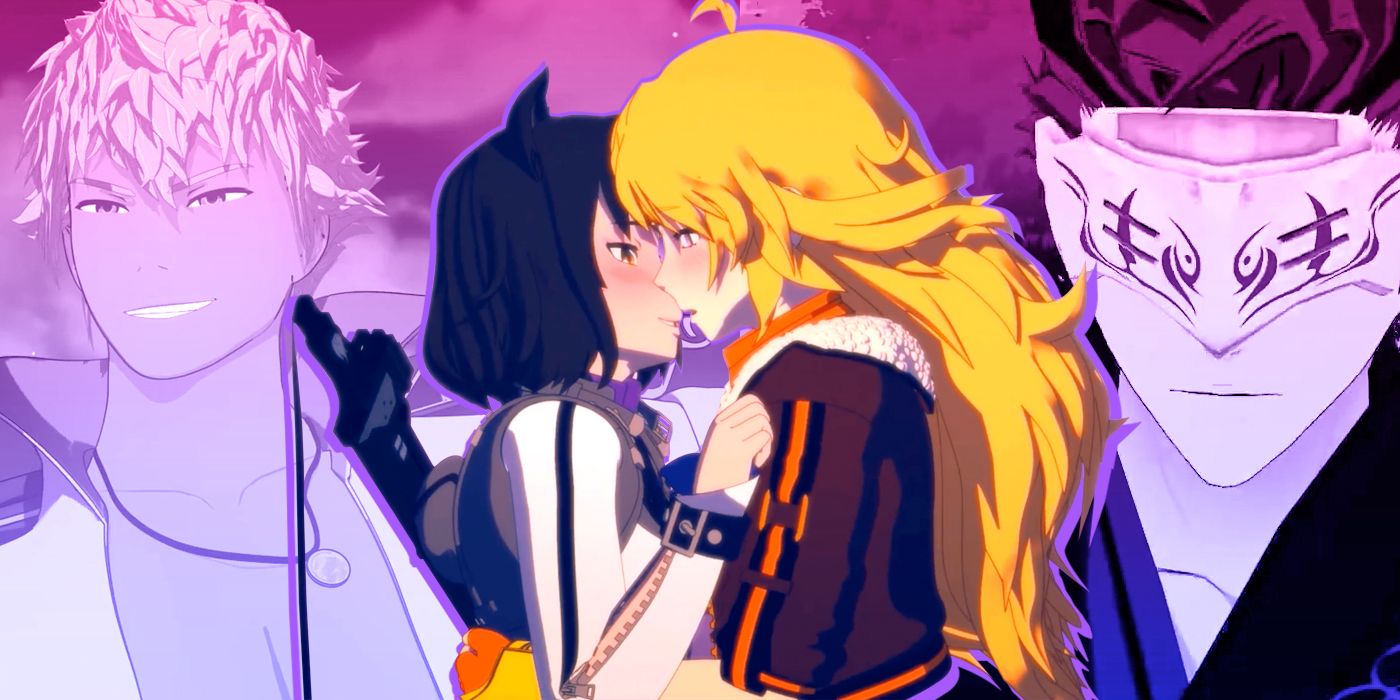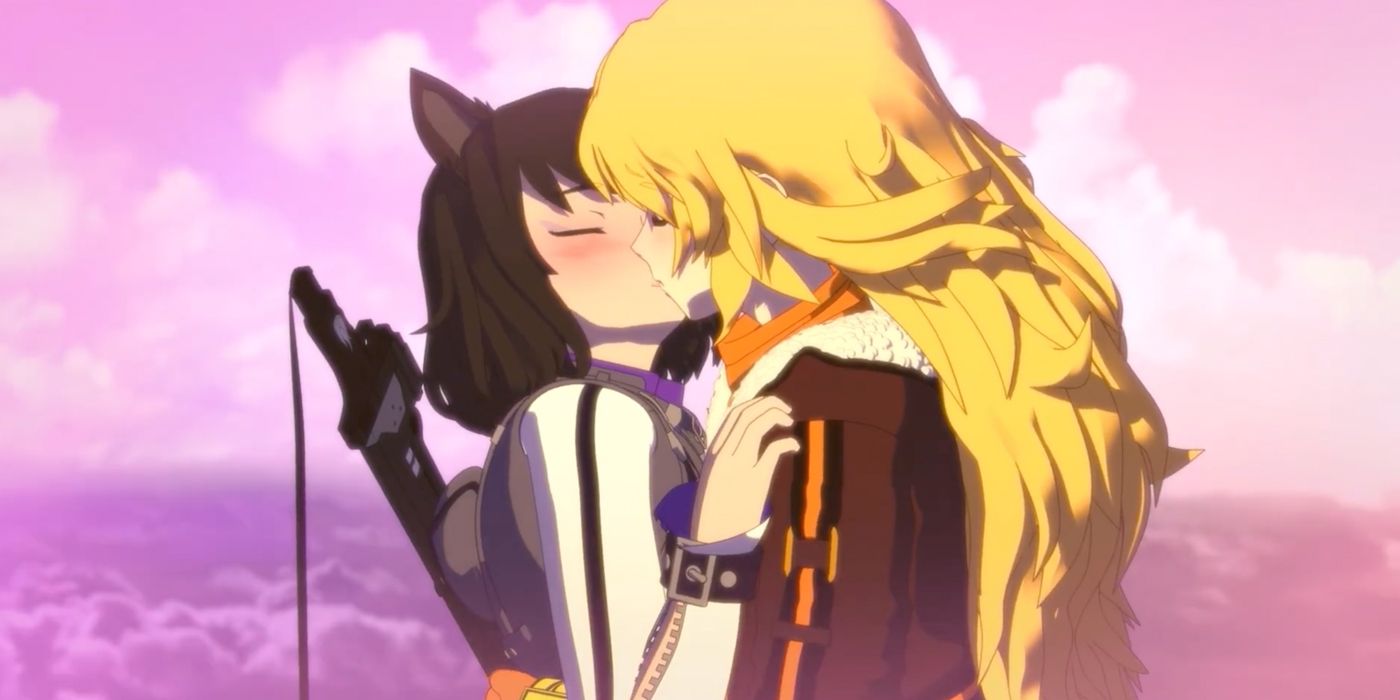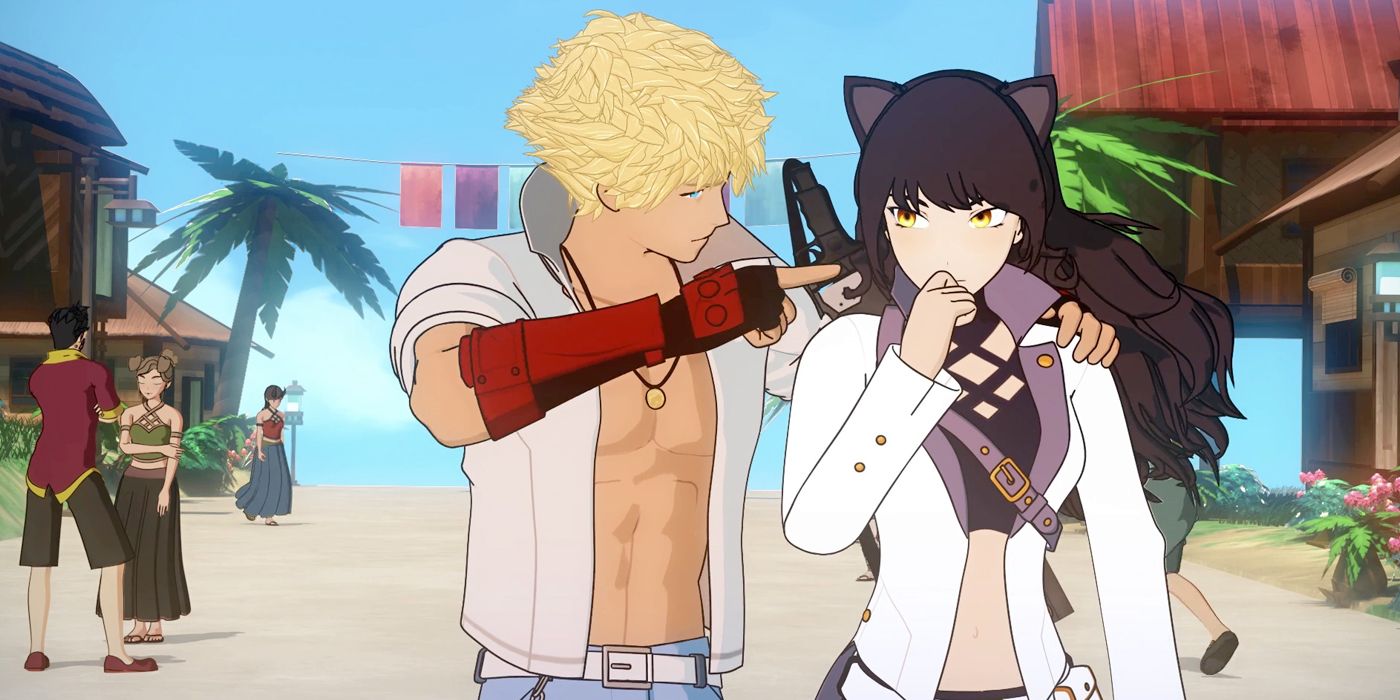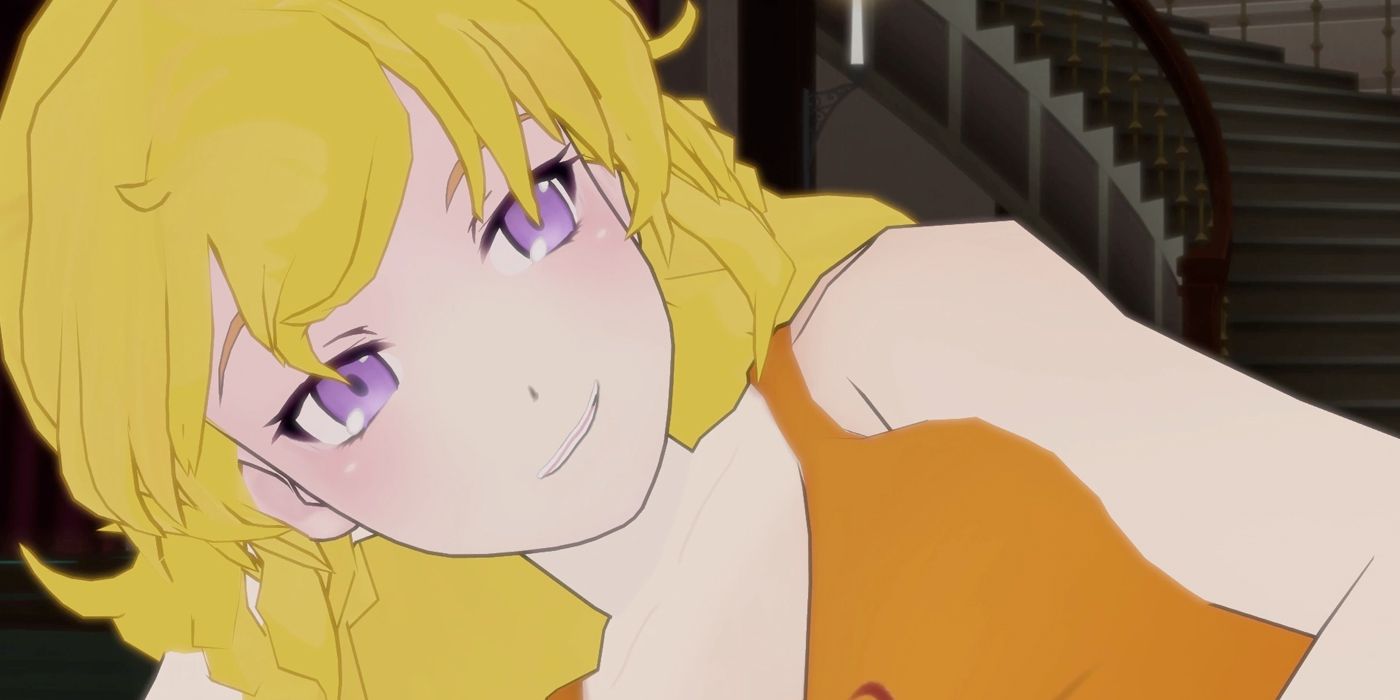The following contains spoilers for RWBY Vol. 9, now streaming on Crunchyroll. This article also contains brief mention of suicide.
Bisexuality is characterized by romantic and/or sexual attraction to two or more genders at different times and in varying degrees. This can include attraction to men, women, trans and non-binary people. Related to bisexuality is pansexuality, which is characterized by romantic and/or sexual attraction to any gender. With the ability to be attracted to more than one gender, there's no one single way to experience bisexuality as it varies from person to person. Even how bisexual individuals choose to self-identify can differ. Unfortunately, despite these varied experiences, this is rarely reflected in mainstream media.
One major reason bisexual people are rarely well-represented is the lack of bisexual creators working behind the scenes. Without bisexual storytellers, this opens the door for the perpetuation of harmful stereotypes that both normalize biphobic attitudes and erase bisexual people, even within the LGBTQIA community. Furthermore, normalization of harmful stereotypes has a negative impact on the well-being of bisexual people. While more modern television shows are starting to change the tide on this front with bi-positive shows like Disney's The Owl House and the MCU's Loki, one overlooked animation series has been challenging bisexual stereotypes for a full decade: Monty Oum's RWBY series, most notably with the lead characters of Blake Belladonna and Yang Xiao Long.
Biphobia and Bisexual Erasure, Explained
At its core, biphobia and bisexual erasure come from a place of rejecting sexual fluidity in a heteronormative society that already categorizes people in binaries: "man" and "woman", "straight" and "gay." Among the attitudes that characterize biphobia and bisexual erasure include the belief that bisexuality is "not a real sexual orientation" and that bisexuals are "actually gay, but not fully out of the closet" or "actually straight and experimenting." Bisexuals are also negatively thought of as shallow, untrustworthy, promiscuous, polygamous and carriers of STIs. Within the LGBTQIA community, bisexuals are negatively thought of as "traitors to the community" and "not gay enough."
In both fiction and in real-life, bisexuals frequently have their identities erased by outside observers ignoring, dismissing, denying or outright re-explaining evidence of bisexuality -- something that was infamously captured in the brunch scene of the Sex and the City Season 3 episode "Boy, Girl, Boy, Girl" in the span of two minutes. With so many examples of biphobia and bisexual erasure to fill a Bingo card, bisexuals are often put in a position of having to defend their sexuality and queerness. Thus, it's always refreshing to come across media that present bisexual people in a wholly positive light. This is something Monty Oum's RWBY series does really well with Blake and Yang, who are presented as attracted to both men and women, but in very different ways that succinctly capture the nuances of bisexuality.
RWBY's Blake Explores the Bisexual Who's Dated Men and Women
Between Blake and Yang, Blake has had the most love interests and the most romantic relationships. She thus explores the type of bisexual who falls in love with people of different genders at different times in her life and has even had relationships with men and women. The first romantic relationship that's explored with Blake is the one she had with the leader of the White Fang, Adam Taurus, as shown in the Black Trailer. When she was still a member of the White Fang, Adam was her mentor and her partner during Schnee Dust Company train robberies.
Initially, Blake was drawn to Adam's values, especially since the White Fang originally started out as a Faunus movement for achieving equality with Humans before it became a criminal gang. As Blake got to know Adam, however, she started noticing a pattern of toxic behavior from him that made her question if they really wanted the same thing. When Adam's actions turned murderous, Blake left him and the White Fang to forge a different life for herself. After enrolling at the Beacon Academy, Blake met her other two love interests, Sun Wukong and Yang Xiao Long.
Between the two, Blake first developed romantic feelings for Sun, especially since he's another Faunus with values that match her own. Though the two quickly became friends and harbored mutual romantic feelings, after the fall of Beacon, they decided to remain friends. This decision, however, was reached after they spent time together in Blake's hometown of Menagerie, and he helped her realize the value of relationships. Since Blake initially returned to Menagerie with intense feelings of guilt over Adam severing Yang's arm during the fall of Beacon as a way of hurting her, she felt it was best to leave Yang to keep her safe from Adam and her criminal past.
Sun made Blake realize Yang lost her arm in an attempt to protect her from Adam and that leaving her at her most vulnerable hurt Yang worse than losing her arm. Since Blake was already aware of Yang's abandonment issues, this most likely inspired her to return to Yang. Though Yang was not warmly receptive to Blake right away, after they confronted Adam a second time, they worked on repairing their relationship. This led to them finally admitting they were in love with each other, which culminated in them sharing their first kiss in the Vol. 9 episode "Confessions Within Cumulonimbus Clouds." After becoming a couple, Blake is shown to be emotionally supportive of Yang at a time when her sister Ruby is in a dark place and feeling suicidal. She also creates a safe space for Yang to be vulnerable.
The recurring pattern in all of Blake's relationships is that she wants to be with someone who shares her values, and found that with Sun and Yang, with the latter eventually becoming her romantic partner. What's groundbreaking about Blake's depiction of bisexuality is that she's never presented as shallow or uncommitted, and her relationships are depicted as an important part of her character growth. None of her relationships is downplayed or made less significant based on who she ultimately ends up with, nor is she shown pursuing multiple partners at the same time. Furthermore, Blake's attraction to men and women is never questioned, challenged, dismissed nor re-explained by any of the show's characters.
RWBY's Yang Explores the Bisexual that Chooses One Life Partner
With Blake exploring the type of bisexual that has a dating history with men and women, Yang explores another common, yet frequently overlooked aspect of bisexuality: being attracted to two or more genders at different times, but only having one romantic partner. When fans are first introduced to Yang in the Yellow Trailer, she's presented as sexually confident and is not afraid to use her sexuality to her advantage, but not in a way that validates the "bisexuals are promiscuous" stereotype. This mainly comes through in her interaction with Junior -- the male owner of a nightclub -- whom she briefly flirts with to get information from him about her missing mother and as part of thrill-seeking, but doesn't take it beyond that.
Subversion of the "bisexuals are promiscuous" stereotype is further showcased in the third episode of Vol. 1 when she's newly arrived at the Beacon Academy with her sister Ruby. In Episode 3 "The Shining Beacon, Pt.2," when all the students are gathered in one hall of the school for what Yang calls "a big slumber party," she's happily gazing in the direction of some shirtless boys with athletic builds while Ruby is writing a letter. When Ruby says their father wouldn't approve of all the boys, Yang suggestively narrows her gaze and says "I know I do," followed by a purr, indicating that she finds the boys sexually attractive. Despite Yang's ogling of the shirtless boys in her school, however, she's still not depicted hooking up with anyone.
Interestingly, that same episode sees Yang introducing herself to Blake for the first time in a somewhat flirty manner, but once again, doesn't try to hook up with her. Instead, she tries to make small talk by complimenting Blake's appearance and tries to find common ground. Once they become academic partners, Blake is the character Yang spends the most time with, which gives her the opportunity to really know Blake as a person. This factors into Yang eventually falling in love with Blake. The first major piece of evidence on this front is in the Vol. 2 episode "Burning the Candle."
During their heart-to-heart conversation, Yang discloses her own abandonment issues to Blake as a way of empathizing with her fears regarding her former gang. She also uses that opportunity to remind Blake there are people who love and care about her. After hugging Blake, she invites her to their school's party and even dances with her. From that point onward, Yang starts demonstrating more romantic interest in Blake, even losing an arm in an attempt to protect her from her violent ex-boyfriend during the fall of Beacon. When their relationship is temporarily strained in the aftermath, Yang is very visibly hurt by Blake's perceived abandonment of her. When Yang does decide to emotionally heal, she eventually gets to a point where she very nervously admits she loves Blake and allows herself to be emotionally vulnerable in her presence.
What's refreshing about Yang's character journey on the front of bisexual representation is that she's never depicted questioning her sexuality, and her relationships are also presented as an important part of her character growth. In a real world full of outside observers ready to tell bisexuals to "pick a side and stay there," it's validating to see a female character in a fictional world who never feels the need to explain or justify her sexuality -- she just follows her heart. Yang's romantic relationship with Blake is also never presented in a way that cancels out her past attraction to men -- it just shows she found someone she wants to pursue a future with. This goes a long way to invalidate the stereotype that bisexual people are untrustworthy or hypersexual swingers. Furthermore, it validates bisexuality as a real sexual orientation and that there is no "right way" to be attracted to more than one gender. This is the powerful message the rest of mainstream media needs to normalize.
All nine volumes of RWBY are streaming on Crunchyroll.




